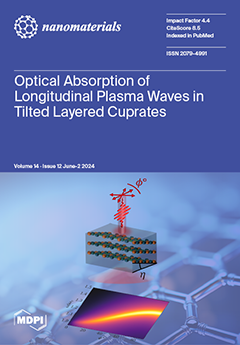In this study, a novel perovskite solar cell (PSC) architecture is presented that utilizes an HTL-free configuration with formamide tin iodide (FASnI
3) as the active layer and fullerene (C60) as the electron transport layer (ETL), which represents a pioneering approach within the field. The elimination of hole transport layers (HTLs) reduces complexity and cost in PSC heterojunction structures, resulting in a simplified and more cost-effective PSC structure. In this context, an HTL-free tin HC(NH
2)
2SnI
3-based PSC was simulated using the solar cell capacitance simulator (SCAPS) within a one-dimensional framework. Through this approach, the device performance of this novel HTL-free FASnI
3-based PSC structure was engineered and evaluated. Key performance parameters, including the open-circuit voltage (V
oc), short-circuit current density (J
sc), fill factor (FF), power conversion efficiency (PCE), I-V characteristics, and quantum efficiency (QE), were systematically assessed through the modulation of physical parameters across various layers of the device. A preliminary analysis indicated that the HTL-free configuration exhibited improved I-V characteristics, with a PCE increase of 1.93% over the HTL configuration due to improved electron and hole extraction characteristics, reduced current leakage at the back contact, and reduced trap-induced interfacial recombination. An additional boost to the device’s key performance parameters has been achieved through the further optimization of several physical parameters, such as active layer thickness, bulk and interface defects, ETL thickness, carrier concentration, and back-contact materials. For instance, increasing the thickness of the active layer PSC up to 1500 nm revealed enhanced PV performance parameters; however, further increases in thickness have resulted in performance saturation due to an increased rate of hole–electron recombination. Moreover, a comprehensive correlation study has been conducted to determine the optimum thickness and donor do** level for the C60-ETL layer in the range of 10–200 nm and 10
12–10
19 cm
−3, respectively. Optimum device performance was observed at an ETL-C60 ultra-thin thickness of 10 nm and a carrier concentration of 10
19 cm
−3. To maintain improved PCEs, bulk and interface defects must be less than 10
16 cm
−3 and 10
15 cm
−3, respectively. Additional device performance improvement was achieved with a back-contact work function of 5 eV. The optimized HTL-free FASnI
3 structure demonstrated exceptional photovoltaic performance with a PCE of 19.63%, V
oc of 0.87 V, J
sc of 27.86 mA/cm
2, and FF of 81%. These findings highlight the potential for highly efficient photovoltaic (PV) technology solutions based on lead-free perovskite solar cell (PSC) structures that contribute to environmental remediation and cost-effectiveness.
Full article






